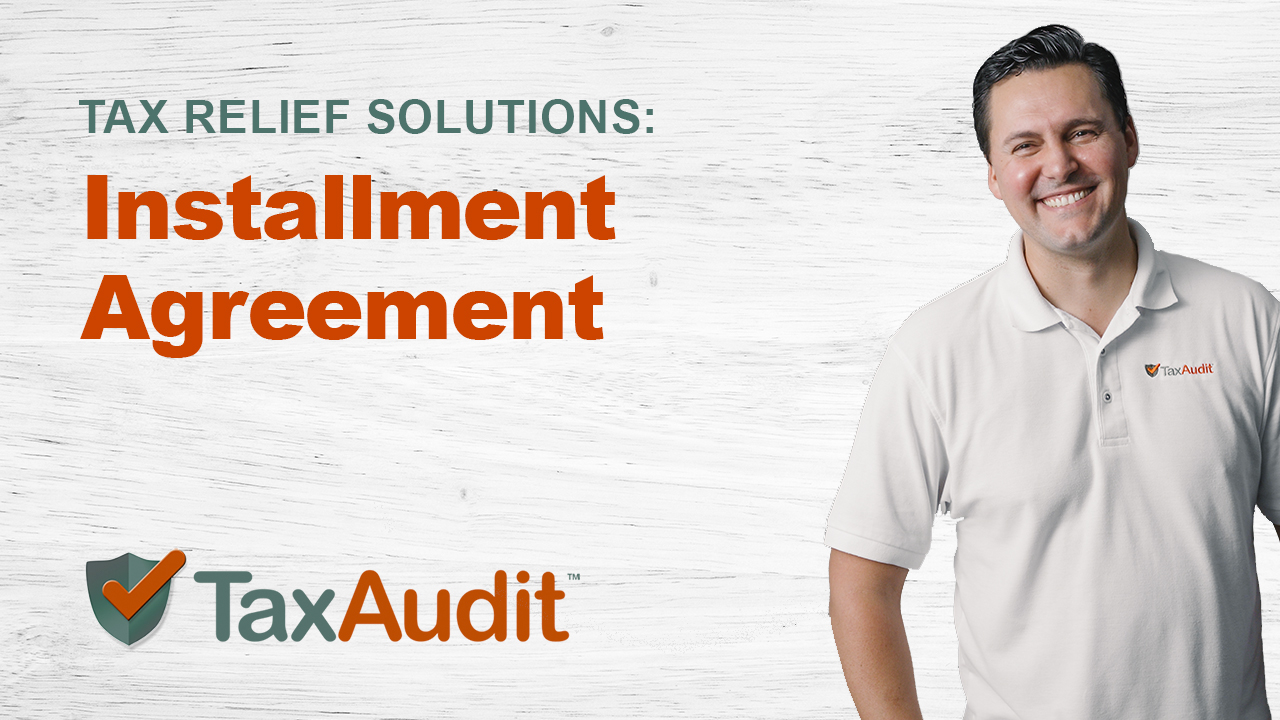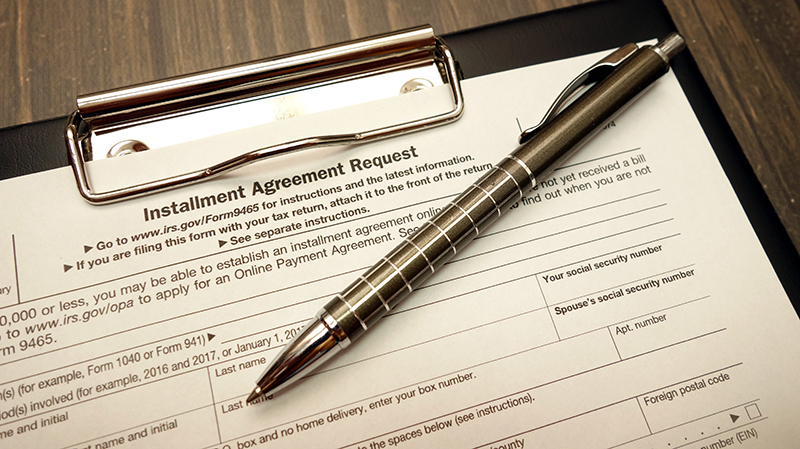IRS Payment Arrangement | Yes, You Can Arrange IRS Payments
November, 07 2022 by Steve Banner, EA, MBA
There is something about receiving a letter from the IRS that can send shivers down one’s spine. You just got home from work and checked the mailbox to find the usual array of credit card offers and inventory blowout sale notices from local furniture stores. But among the supermarket catalogs and advertising flyers, there lurks a very official-looking letter with your name in the window and the IRS logo on the front. It may be something like a notification that you made a math error on your tax return and your refund will be $600 dollars more than you thought! On the other hand, it may be unwelcome news like the agency is planning to place a lien on your beloved 1968 Ford Mustang. But you will never know unless you open that dreaded envelope…
Of course, you could take the same course of action that some people do and put the unopened letter in a drawer, forgetting about it until a second, third, or fourth letter arrives. Or you could avoid opening the letters yourself, and eventually take them all to a tax professional who can do it for you. (Just to clarify, we do not recommend this course of action!)
What we do recommend is opening the letter immediately. If it contains good news, then your celebrations can start right away. If it contains bad news, then you can start to explore the various options available to you. The longer you wait to get started, the narrower your list of available actions gets, and the trickier it becomes to extricate yourself from your tax troubles. Just imagine the woes of your average head-in-the-sand and letters-in-the-drawer taxpayer who finally plucks up the courage to seek tax advice – only to find out that there is a lien on their ’67 Ford GT40 Mk IV car to secure a $40,000 tax debt they did not know they had!
The IRS offers a number of payment options that allow taxpayers to avert drastic outcomes such as liens or even levies, but both parties need to agree on the plan. When you think about it, many times the IRS and the taxpayer have very different viewpoints about unpaid tax debt. The IRS wants its money immediately and in full, while the taxpayer wants to pay nothing or as little as possible. In many cases, a taxpayer is unable to pay the full amount of tax due right away, and thus, the parties need to reach an agreement to the satisfaction of both sides. The COVID-19 pandemic and subsequent inflation have left many taxpayers stretched to their financial limits and unable to pay their tax debts. To help with this negotiation process during the past couple of years, the IRS has tried to make its tax debt settlement system more flexible.
You can negotiate a plan with the IRS to pay your debt off in a series of installments, either on a short-term or long-term basis. You can apply for a short-term plan if you believe you will be able to pay off your debt within 6 months; or you can apply for a long-term plan if you will need more than six months to resolve your debt. Exactly which payment options are available to you will depend on your specific tax situation but bear in mind that interest and penalties will be added to your remaining balance until the debt is paid in full. In other words, the sooner you can pay off your debt, the less you will need to pay overall.
Depending on the amount of your tax debt, you can apply to set up a payment plan through several different methods.
Online
You may qualify to apply online as follows:
- Short-Term Payment Plan – if you owe less than $100,000 in total tax, penalties and interest, and can pay in 180 days or less.
- Streamlined Long-Term Payment Plan – if you owe $50,000 or less in total tax, penalties and interest, you have filed all current and prior required tax returns and can pay your tax bill within 72 months or by the collection statute of limitations expiration date, whichever is shorter. Generally, the statute of limitations on the IRS collection of tax debt is 10 years from the date the tax is assessed.
Phone
You may apply for any short- or long-term payment plan by calling the IRS at 1-800-829-1040 for individuals – and business taxpayers may call 1-800-829-4933.
Mail
You may apply for:
- A Streamlined Long-Term Payment Plan - for a debt of $50,000 or less by completing and submitting IRS Form 9465, Installment Agreement Request. (All the same requirements listed above in the “online” section apply.) Provided that the proposed monthly payments will resolve the debt within 72 months or 10 years after the tax was originally assessed, no financial statements are required to support the proposal. Otherwise Form 433-F, Collection Information Statement would be filed in addition to Form 9465.
- A Non-Streamlined Installment Agreement - if you owe $50,001 up to $250,000 and can pay the full amount of tax due before the collection statute of limitations expires. Non-streamlined installment agreements are only available for individual taxpayers and may require the assistance of a tax professional as the IRS will need to determine what the monthly payment will need to be, so the debt is paid in full within the statute. To apply for a non-streamlined installment agreement, taxpayers should submit IRS Form 433-D, Installment Agreement.
After the IRS has approved your payment plan, you can make payments directly from your checking or savings account, by check, money order, payroll deduction from your employer, or by cash at an IRS retail partner. You can also use your debit/credit card, but this method is subject to additional fees.
As you can see from the above, you can indeed arrange IRS payments, but you will need to follow the rules to set up your payment plan. There is also another option if your financial situation is so limited that you are unable to make any arrangements to pay your debt. In this case, you would need to provide detailed evidence of your monthly income and expenses to the IRS to demonstrate your inability to pay. If the IRS determines that you cannot pay any of your tax debt, they may classify your account as “currently not collectible.” Collection activities on your debt will then be temporarily delayed until your financial condition improves. This does not erase your debt but, instead, it means that the IRS has determined you cannot afford to pay the debt at this time.
No one enjoys enduring the financial and emotional stress caused by having a tax debt over their head, but the IRS offers several ways for the debt to be addressed. The help of an experienced tax professional can be vital to guide you through the list of alternative programs and their applicable guidelines. A summary of collection alternatives is found in this video from TaxAudit’s leading tax attorney.

For no fee and with no obligation, you can talk with an expert who will help you learn more about the best course of action in your situation. TaxAudit will also represent you before the IRS if you decide you would rather not face the IRS alone.





